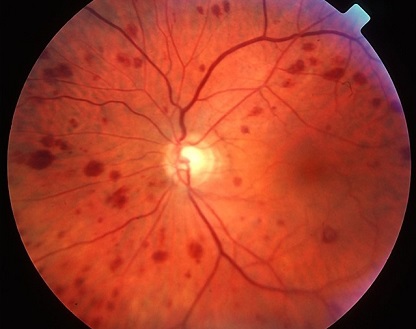Glaucoma News: Study Shows That S-Allyl L-Cysteine Is Able To Counter Retinal Ischemia And Is Neuroprotective For The Eyes
Nikhil Prasad Fact checked by:Thailand Medical News Team Jan 23, 2024 1 year, 11 months, 3 weeks, 3 hours, 4 minutes ago
Glaucoma News: Retinal ischemia is a critical factor in vision-threatening retinal disorders, including diabetic retinopathy, age-related macular degeneration, and glaucoma. Recent research conducted by Aston University in Birmingham-UK, the University of British Columbia in Canada, Cheng Hsin General Hospital, China Medical University, National Yang Ming Chiao Tung University, and Shin Kong Wu Ho-Su Memorial Hospital in Taiwan has shed light on the promising effects of S-allyl L-cysteine (SAC) in countering retinal ischemia. This
Glaucoma News report delves into the detailed findings of the study, exploring SAC's neuroprotective properties and its impact on crucial biomarkers, MCP-1 and PKM2.
 S-Allyl L-Cysteine Is Able To Counter Retinal Ischemia
Understanding the Impact of Retinal Ischemia
S-Allyl L-Cysteine Is Able To Counter Retinal Ischemia
Understanding the Impact of Retinal Ischemia
Retinal ischemia, characterized by insufficient blood flow to the retina, is a key contributor to various debilitating eye conditions. The cellular consequences of retinal ischemia involve the progressive death of cells like retinal pigment epithelium (RPE) and retinal ganglion cells (RGCs). The demise of these cells can lead to vision impairment and, in severe cases, complete blindness. Vascular endothelial growth factor (VEGF), hypoxia-inducible factor 1-alpha (HIF-1α), pyruvate kinase M2 (PKM2), and monocyte chemoattractant protein-1 (MCP-1) are crucial biomarkers associated with the development of retinal ischemia-related disorders.
SAC's Mechanism of Action
The study aimed to unravel the therapeutic potential of SAC, an active ingredient found in garlic, against retinal ischemia. Garlic, a widely used food ingredient, has been chosen for its purported antioxidative and neuroprotective effects. SAC's impact was evaluated through cell culture experiments using porcine RPEs subjected to H2O2-induced oxidative stress and an animal model of high intraocular pressure (HIOP)-induced retinal ischemia and reperfusion (I/R).
Results and Analysis
-Cell Viability and Oxidative Stress: SAC demonstrated a dose-dependent neuroprotective effect on RPE cells under oxidative stress, with significant cell viability improvement at 100 μM. This indicates SAC's potential in countering the toxic effects of oxidative stress.
-Inflammatory Biomarkers: SAC exhibited the ability to downregulate the inflammatory biomarker MCP-1. This is significant, as MCP-1 is known to play a pivotal role in orchestrating the inflammatory cascade in ischemic retinopathy, contributing to neovascularization and inflammation.
-Angiogenesis Factor: PKM2, an angiogenesis factor, was also downregulated by SAC. PKM2's interaction with MCP-1 and its role in inducing proinflammatory molecules make it a key target in retinal ischemia. SAC's impact on PKM2 suggests its anti-angiogenic potential.
-Electrophysiological Function:
gt; In a rat model of HIOP-induced retinal ischemia, post-administration of SAC counteracted the ischemic-associated reduction in electroretinogram (ERG) b-wave amplitude. This highlights SAC's potential in preserving neuronal physiological function following retinal ischemia.
-RGC Density: SAC demonstrated neuroprotective effects by counteracting the reduction in retinal ganglion cell (RGC) density, crucial for transmitting visual information. This further emphasizes SAC's potential in preventing permanent vision loss associated with retinal ischemia.
Discussion and Implications
The study's findings propose SAC as a promising candidate for the prevention and treatment of retinal ischemia-related disorders. By exhibiting antioxidative, anti-angiogenic, anti-inflammatory, and neuroprotective properties, SAC addresses multiple facets of retinal ischemia. The downregulation of MCP-1 and PKM2, along with the preservation of ERG b-wave amplitude and RGC density, showcases SAC's comprehensive therapeutic impact.
Despite the promising results, it's essential to acknowledge the limitations of the study, including the use of a pig eye model and the acute nature of the retinal ischemia model. Further research, potentially involving human RPE cells and chronic ischemia models, is warranted to validate and extrapolate these findings.
Conclusion
In conclusion, S-Allyl L-Cysteine emerges as a potential breakthrough in the realm of retinal health. This study underscores its efficacy in countering retinal ischemia through a multifaceted approach, offering hope for improved treatments and outcomes in conditions such as diabetic retinopathy, age-related macular degeneration, and glaucoma. As the research paves the way for future investigations, the therapeutic potential of SAC in ocular health stands as a beacon of progress in the field of vision science.
The study findings were published in the peer reviewed International Journal of Molecular Sciences.
https://www.mdpi.com/1422-0067/25/2/1349
For the latest Glaucoma News, keep on logging to Thailand Medical News.
